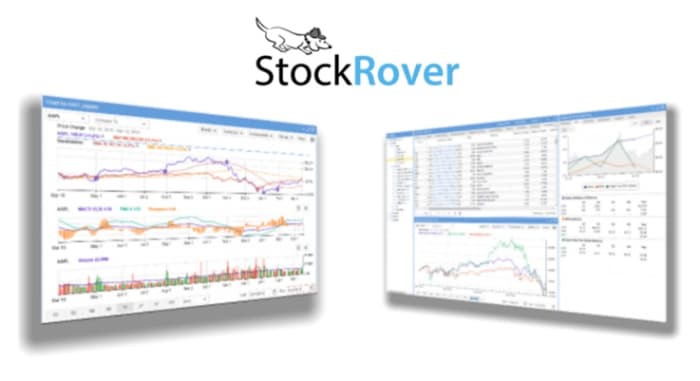Last week, I wrote about Apple stock (AAPL) – Get Apple Inc. Report in the context of the recent interest rate hikes. Among the reasons why the share price has risen lately despite monetary tightening was the Cupertino company’s balance sheet. Here is the quote:
“In a high interest rate environment, companies that are more heavily leveraged can suffer from the higher cost of servicing their debt. Higher interest paid means lower net income and EPS. But Apple does not have this problem. The company has [much] more cash and equivalents on its balance sheet than debt.”
The article triggered a few questions: wouldn’t high interest rates still have a disproportionally negative impact on Apple’s large debt balance vs. its cash holdings? I decided to dig deeper into this topic today.
To be clear, I will only focus on the impact of higher interest rates on Apple’s balance sheet here. The broader effect of rising rates on the company’s core business and the global economy at large is the subject of a different conversation.
(Read more from Apple Maven: Why Apple Stock Rallied After The Recent Interest Rate Hike)
Apple: a look at the company’s debt
Let’s start from the top: as of fiscal Q3 of the current year, Apple had about $59 billion in net cash broken down as follows:
- $179 billion in cash, equivalents, and marketable securities
- $120 billion in term debt and commercial paper
Think about personal finances for a moment. Apple’s mix of cash and debt would be akin to someone having money in a checking and savings account, but also carry a credit card balance or have personal loans. This makes sense for Apple, although not so much for individuals, largely because of the complexity of the company’s global operations.
Back to personal finances, it is reasonable to assume that the interest that someone pays on loans would be substantially higher than the interest earned on cash. Think of credit card vs. savings account rates, and how the former tends to be way richer than the latter.
But this is not quite the case for Apple. According to the latest annual filing, the company’s weighted average interest rate on its commercial paper in 2021 was a meager 0.06%!
Of course, the rock-bottom rate is associated with short-term borrowings. Apple has debt maturing in 2061 that was issued last year and that has a higher effective interest rate of 2.9%. Still, this number is impressively low compared to treasury rates that currently hover just short of 3% (granted, they were lower in 2021, when the debt was issued).
Apple is probably able to borrow at such low rates because of the company’s credit quality and lower perceived risk.
The majority of Apple’s term debt matures in 2027 or beyond – that is, no sooner than 5 years from now. Because the interest rate on nearly all of Apple’s debt is fixed (i.e., not floating), rising rates are actually good news for the company’s balance sheet. This is true because the debt is fixed at the generally lower interest rate and most of it does not need to be rolled over for a few years.
Apple: a look at the company’s cash
On the cash and equivalents side, Apple owns the following, among other instruments:
- $13 billion in cash, $11 billion in money market funds, and $3 billion in CDs
- $10 billion in treasuries and $9 billion in corporate debt of short duration
- $74 billion in corporate debt, $35 billion in treasuries and agency, and $21 billion in asset-backed securities, all of long duration
As Apple refreshes its portfolio above in a higher rate environment, interest income should improve.
In fact, 10-year treasury yields (a proxy for interest rates) began to rise more decisively in the second half of last year. Since then, Apple’s interest income bottomed at $650 million in the last quarter of the year and has been growing since then to $722 million in the last period – despite the gross cash balance having declined due to an aggressive share repurchase program.
It is hard to tell for sure how much more Apple can earn in net interest income as rates rise. But a clue can be found in the following statement from the company’s most recent 10-K form:
“A 100 basis point increase in market interest rates would cause interest expense on the Company’s debt as of September 25, 2021 […] to increase by $186 million […] on an annualized basis.”
I believe that the dollar figure above is small compared to Apple’s $24 billion in “level 1” cash and money market balances alone. A 100 basis point increase in rates applied to $24 billion would add up to around $240 million – more than offsetting the extra cost of debt. And that is assuming that Apple’s other cash-like securities would not generate a P&L benefit as well.
Could Apple stock benefit?
Another interesting question to answer is whether Apple stock price could rise as interest rates increase and net interest income climbs. In my view, the impact to the bottom line could be noticeable, although likely not sizable. Every $160 million in extra net income is enough to drive a 1-cent increase in Apple’s EPS.
However, I wonder if investors would ever give Apple enough credit for the income that it can generate from its financial assets vs. what the company produces from operations. The latter is much more likely to drive investor sentiment and, as a result, share price movements.
Explore More Data And Graphs
Many of the graphs used by the Apple Maven are provided by Stock Rover. We have been impressed with the breadth and depth of information on markets, stocks and ETFs that this platform provides. Stock Rover also helps to set up detailed filters, track custom portfolios and measure their performance relative to a number of benchmarks.
To learn more, check out stockrover.com and get started for as low as $7.99 a month. The premium plus plan that we have will give you access to all the information that goes into our analysis and much more.
(Disclaimers: this is not investment advice. The author may be long one or more stocks mentioned in this report. Also, the article may contain affiliate links. These partnerships do not influence editorial content. Thanks for supporting Apple Maven)






